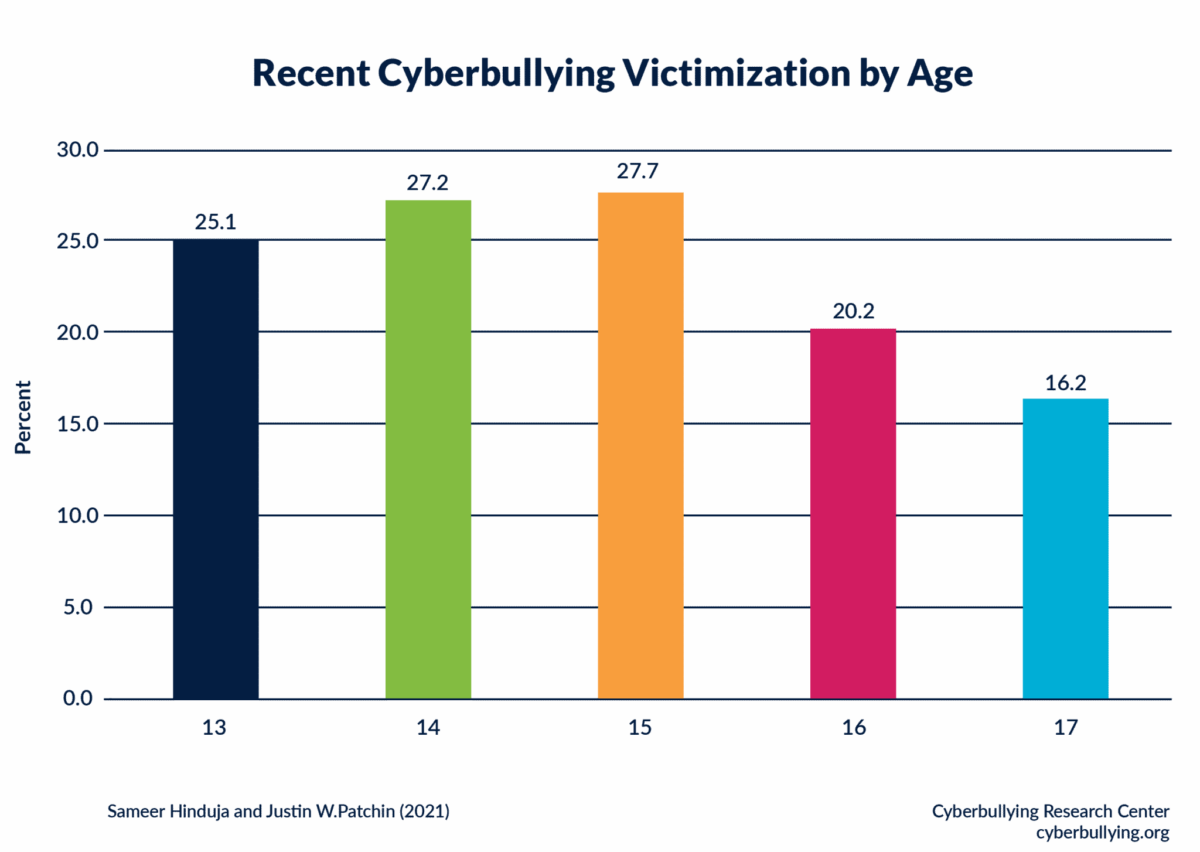Cyberbullying Prevention in K-12 Schools
With so much technology at their fingertips, most students today have unprecedented access to texting, chats, apps, and online content. That amount of availability and connectivity presents challenges and risks for young people to navigate—including dealing with cyberbullying.
While hurtful words, actions, and harassment may have always been a problem in K-12 schools, cyberbullying allows that same, sometimes dangerous, behavior to happen almost anywhere, at any time. And cyberbullying can have lasting effects.
Over 60% of the students who experienced cyberbullying stated that it deeply affected their ability to learn and feel safe at school, and 10% said they skipped school at least once because of cyberbullying. In one survey, nearly a quarter of students said they’d been victims of cyberbullying in the month prior.

Given that bullying of any kind can have a serious and negative impact on a child’s mental health, academics, and behavior, it’s imperative that cyberbullying prevention in K-12 schools is implemented with the help of parents and staff.
Warning signs a student is being cyberbullied or is cyberbullying others
One of the first steps to cyberbullying prevention in K-12 schools is knowing what to look out for. While this is not an exhaustive list, these are some of the warning signs that a student may be involved in cyberbullying.
- There is a noticeable increase or decrease in device use, including texting.
- A student exhibits strong emotional responses (laughter, anger, distress, sadness) to what is happening on their device.
- A student hides their screen or device when others are near and avoids discussion about what they are doing on their device.
- Social media accounts are shut down or new ones appear.
- A student starts to avoid social situations, even those they enjoyed in the past.
- A student becomes withdrawn or depressed or loses interest in people and activities.
K-12 schools can watch for the above warning signs and inform the parents and caregivers in their community to be mindful of these signs as well. If these signs are noticed, a conversation can be started with the student to help address the cause so proper steps can be taken.
It’s also important to pay attention to the devices and online platforms a student uses because many of the warning signs that cyberbullying is occurring happen around the use of a student’s device. The more devices and digital platforms students use, the more opportunities there are for them to be exposed to potential cyberbullying.
How to stop cyberbullying in K-12 schools
Cyberbullying is a form of bullying, and K-12 should take the same steps to handle it:
- Support the child being bullied
- Address the bullying behavior of a participant
- Show students that cyberbullying is taken seriously
Because cyberbullying can occur out of sight, it’s important to discuss with students how to recognize negative online behavior, what to do if they see it or are the target of it, and to encourage students to report any sign of cyberbullying to a trusted adult, such as their parent, teacher, or guidance counselor.
If cyberbullying occurs, let students know they can take these steps:
Block – On their phone and social media, block the person doing the online bullying, but save any evidence first.
Document – When possible, take screenshots and keep a record of what is happening and where. Most laws and policies note that bullying is a repeated behavior, so records help to document it.
Ignore – Don’t respond or retaliate. Instead, go to a trusted adult for help.
Report – Tell students that if they know a classmate is cyberbullying, they should report it to the school. In addition, let students know they can also contact app or social media platforms to report offensive content and have it removed. If a student has received physical threats, or if a potential crime or illegal behavior is occurring, report it to the police.

Students can also consider deleting their social media accounts if the cyberbullying seems like it will be a persistent problem.
If a student says they’re being cyberbullied, reassure them that they are supported and cared for and that they’re not alone. To offer further support to the bullied student, peers, mentors, and trusted adults can sometimes intervene publicly by posting positive comments about the person targeted with bullying to try to shift the conversation in a positive direction.
It can also help to have individual conversations with the child exhibiting bullying behavior and the recipient of this behavior. During these conversations, try to determine if more professional support is needed for those involved, such as speaking with a guidance counselor or mental health professional.
Whether a student is the victim, the perpetrator, or the witness to cyberbullying, any kind of bullying needs to be taken seriously and addressed immediately.
How to prevent cyberbullying before it starts
Teaching students to engage respectfully online is a key step to prevent cyberbullying. Therefore, K-12 districts should incorporate digital citizenship into their curriculum if they haven’t already. Teaching students that they shouldn’t say things online that they wouldn’t say in person and explaining empathy and how to apply it to others are critical digital citizenship skills that help students make good choices online and can help prevent cyberbullying.
K-12 leaders can help foster good digital citizenship in their district by distributing digital citizenship resources to parents. To assist schools with that, Lightspeed Systems® created a free downloadable guide all K-12 districts can give out to parents to help them understand what digital citizenship is, why it matters, and how to teach it to their kids.
Parents and teachers can’t be with students all the time and the realities of peer pressure and youthful behavior mean the threat of cyberbullying may always be present. That’s where edtech software like those provided by Lightspeed Systems can help prevent cyberbullying before it ever begins.
Lightspeed Filter™ (formerly Relay) helps school IT teams prevent cyberbullying by:
- Letting schools customize social media controls so they can set appropriate policies to common cyberbullying platforms—like Instagram and Twitter—while on school devices.
- Alerting administrators and educators about student behavior that needs to be addressed with a customizable list of flagged terms to detect signs of cyberbullying.
- Blocking potentially harmful comments and sidebars on YouTube to ensure the platform is a safe, distraction-free learning resource.
Empower teachers to prevent cyberbullying (and other inappropriate or distracting online behaviors) with Lightspeed Classroom Management™, which allows educators to see student screens, close tabs, view and block URLs, and share screens during both in-person and remote learning.
And if there is a threat of dangerous behavior such as cyberbullying or violence, Lightspeed Alert™ can help detect the warning signs in real time. Reports from Lightspeed Alert’s software provide timelines and screenshots to notify district administrators and school safety officers fast so intervention can occur in time to help.
Download this free guide to help identify and prevent bullying in your school district.

